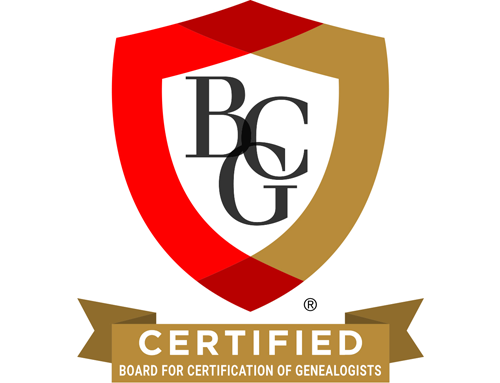Italian Genealogical Research: Part I
By Melanie D. Holtz, CG®
Between 1880 and 1920 more than four million Italians immigrated to the United States. During this same time period, there were significant Italian immigration waves to South America, Canada, Switzerland, France, England, and many other countries. Italians remain one of the largest ethnic groups within the U.S., and interest in Italian ancestry and culture continues to grow exponentially. Professional genealogists, especially those working in the U.S., Canada, or South America, may encounter Italian ancestors when researching an extended family.
Historical Considerations for Italian Research
The country of Italy was created from multiple city-states during a time period known as Italian Unification. Combining vastly different city-states with different cultural mores and dialects was especially challenging, and those differences are seen within the records. As not all areas of present-day Italy became part of the country during Italian Unification, understanding history can help locate hard-to-find records.
| 1543–1563 | The Council of Trent, a body of Catholic leaders, met in the city of Trent to reform various policies of the Catholic Church. After the Council’s adjournment in 1563, priests were required to maintain baptismal, marriage, and death/burial records. In 1614, Pope Paul V prescribed the keeping of status animarum (State of the Souls) records in his book, Rituale Romanum. |
| 1559–1713 | Spain ruled most of present-day Italy. Some records in this time period are in Spanish. |
| 1713–1796 | The Austrian Hapsburgs ruled most of present-day mainland Italy. German can be found in the records of this time period, most especially in the northern regions. |
| 1796 | Napoleon Bonaparte, emperor of France, conquered the Austrians and gained control of Italy. |
| 1806–1815 | Napoleon ruled most of Italy. In 1806 he implemented civil registration. |
| 1808 | The King of Naples introduced civil registration to the Kingdom of Naples (in general, those areas of mainland Italy south of Roma). Civil registration was called the Stato Civile Napoleonico (Napoleonic Civil Registration). |
| 1813–1815 | Civil registration ended in most areas of northern Italy, and the present-day Italian regions were returned to their former rulers. Southern Italy maintained civil registration from 1806. Sicilia did not begin civil registration until 1820 and continued it unabated. |
| 1816–1865 | Civil registration during this time period was called Stato Civile Restaurazione (Restoration Civil Records]) and kept by part of the peninsula between 1816–1865 and in Sicilia from 1820–1865. |
| 1821–1831 | During this time period there were many revolts against former rulers. You may find that civil registers for some years were destroyed, especially in the region of Sicilia. |
| 1848–49 | There were bloody revolts against Austrian rule in most major cities. New governments were established, and the Pope won back control of Roma. |
| 1858–59 | Most of northern Italy was united under the Kingdom of Sardinia. |
| 1860–62 | Sicilia and southern Italy were freed from French rule. |
| 1861–65 | Italian Unification: On 15 November 1865 King Vittorio Emmanuele united all city-states, except for the city of Roma, the independent country of San Marino, and the region of Venezia. After this point, civil registration was known as the Stato Civile Italiano (Italian Civil Records). |
| 1866 | The region of Venezia became part of Italy after the Prussians defeated the Austrians. Law now mandated civil registration. |
| 1870–71 | The French were ousted from Roma during the Franco-Prussian War. Italy took control of all areas except for the Vatican. The capital of Italy was moved from Torino to Roma. |
| 1915–18 | After World War I, Trentino and Trieste became part of Italy. |
| 1946 | Italians voted to establish a republican constitution. |
| 1970 | Civil divorce was made legal. |
Getting started in Italian research is not as daunting as it might seem. There are many helpful resources available for free or at low cost. FamilySearch’s Family History Research Wiki on Italian Genealogy contains helpful information on all record types. They also offer a video course on beginning Italian genealogical research, genealogical word lists, and letter-writing and handwriting guides that are very useful.
- FamilySearch video course on Italian research
- Italian Genealogical Word List
- Latin Genealogical Word List
- Letter Writing Guide
- Italian Handwriting Guide
Brigham Young University also has an Italian script tutorial that can be invaluable when reading the records.
The resources listed below are aimed at the beginner and intermediate researcher. They contain translations of the most commonly found documents, guidance on ordering documents from Italy, details on the various Italian archives, and other information.
Adams, Suzanne Russo. Finding Your Italian Ancestors: A Beginner’s Guide. Provo, Utah: Ancestry Publishing, 2008.
Colletta, John Philip. Finding Italian Roots: The Complete Guide for Americans. 2nd ed. Baltimore, Maryland: Genealogical Publishing Company, 2008.
Nelson, Lynn. A Genealogist’s Guide to Discovering Your Italian Ancestors: How to Find and Record Your Unique Heritage. Cincinnati, Ohio: Betterway Books, 1997.
Is It Important to Know the Town of Origin?
It is essential to know the ancestor’s town of origin, as nearly all records useful for genealogical research were created at the town (commune) or parish (parrocchia) level. If the town is unknown the research should first focus on the records created by these ancestors in the place of immigration. Once the town of origin is known, research can proceed in the Italian records.
In large cities, like Roma, Palermo, or Napoli, knowing the neighborhood (quartiere) where the family resided is essential to effectively research the civil records. Large cities had multiple town halls so the civil records are separated by the neighborhood where they were recorded. Not knowing the neighborhood may require paging through thousands of records for each town hall and each year, a time-consuming process.
Italian military records are arranged by military district, with only a few military districts within each province. Each provincial/state archives (Archivo di Stato) conserves 19th century military records for their province. Where a researcher can find pre-19th century military records varies. Research in military records could determine, for example, the town of birth for a male ancestor born after 1855, even though all that is known is that he came from the province of Napoli.
Ports of Emigration
Understanding the major ports of Italian emigration is also important. Italian ancestors who emigrated out of Genova were usually from northern Italy. Ancestors who emigrated from Napoli were usually of southern Italian or Sicilian descent. While some immigration manifests show the port of emigration as Palermo, these ships also docked in Napoli to gather supplies and additional passengers for the transatlantic journey. Therefore, ship manifests that show Palermo as the port of emigration may also include immigrants from southern Italy.
Understanding the general area an ancestor may have come from could help determine the town of origin, as town names on immigration manifests are often abbreviated. For example, if an ancestor came from the town of Santa Maria, knowing the general area of origin may help narrow down which one of the twenty-plus towns in Italy that begin with Santa Maria is the correct one.
Tracing Italian Women
Italian women used their birth surname throughout their lives, even on their immigration manifests. Occasionally, you may find a record under her maiden and married surnames, with the word “in” between them. Ecclesiastical records may note only her first name once she reaches adulthood, and she may be designated as “the wife of [husband’s name]” or “the daughter of [father’s name].” However, while this was the practice in Italy and other Latin countries, after immigration to the United States Italian women were recorded using their husband’s surname.
In my next post, we’ll discuss the five most common record sets used in Italian research, the best places to find records outside of Italy, and additional educational resources on Italian genealogical research.
Melanie D. Holtz, CG
Melanie@holtzresearch.com
www.italyancestry.com
Specializing in Italian Genealogical Research and Dual Citizenship
The words Certified Genealogist are a registered certification mark, and the designations CG, CGL, and Certified Genealogical Lecturer are service marks of the Board for Certification of Genealogists®, used under license by board certificants after periodic evaluation.


